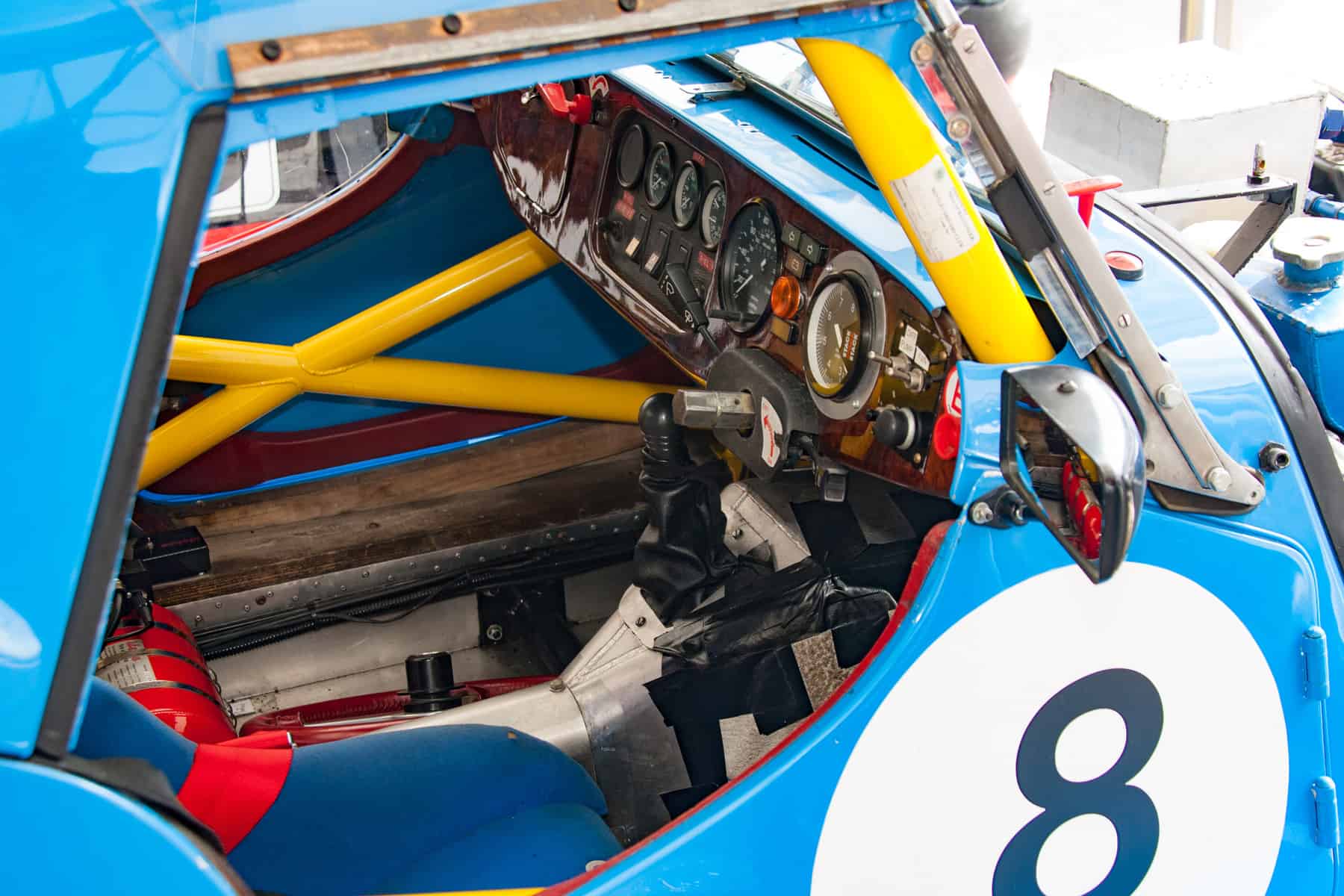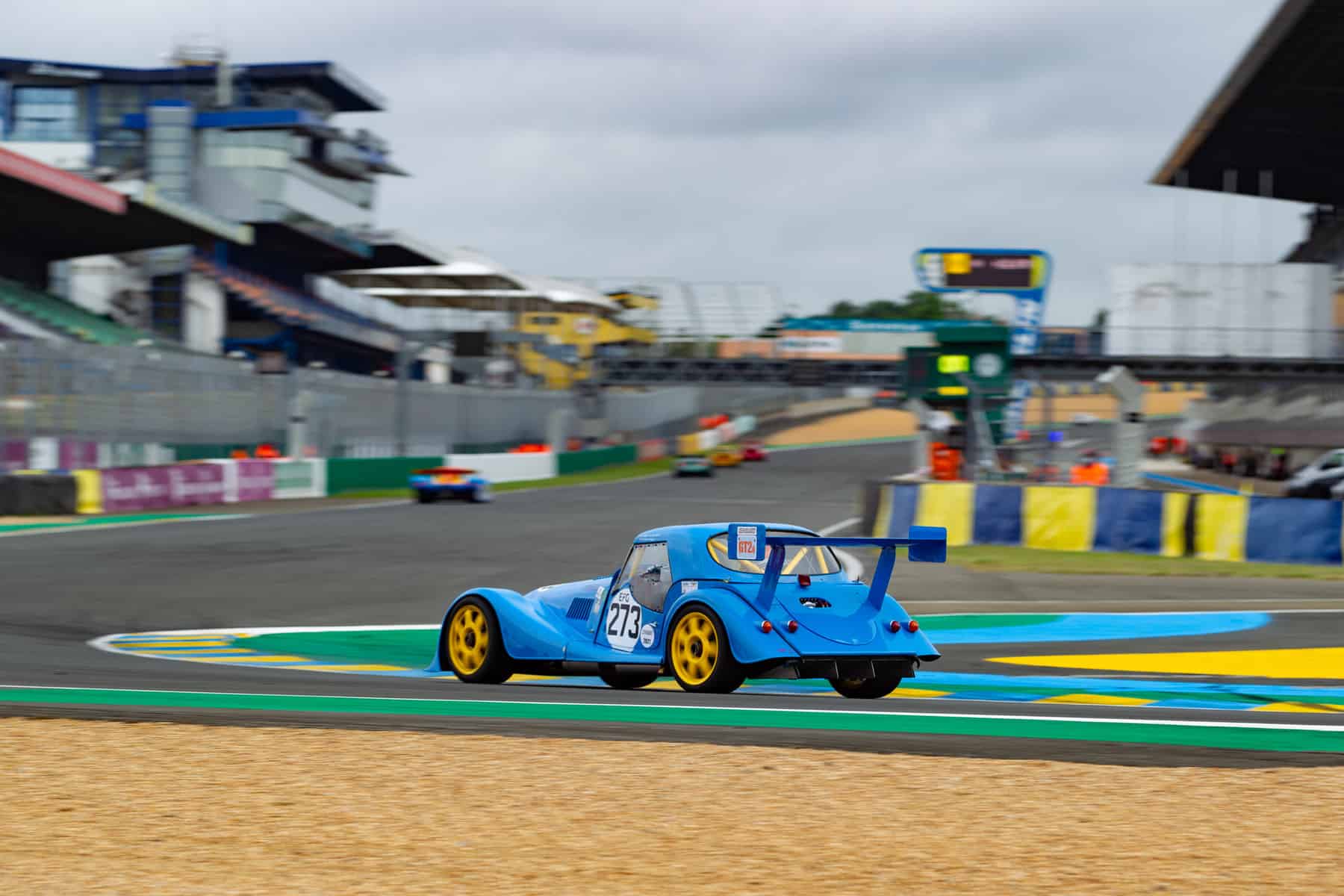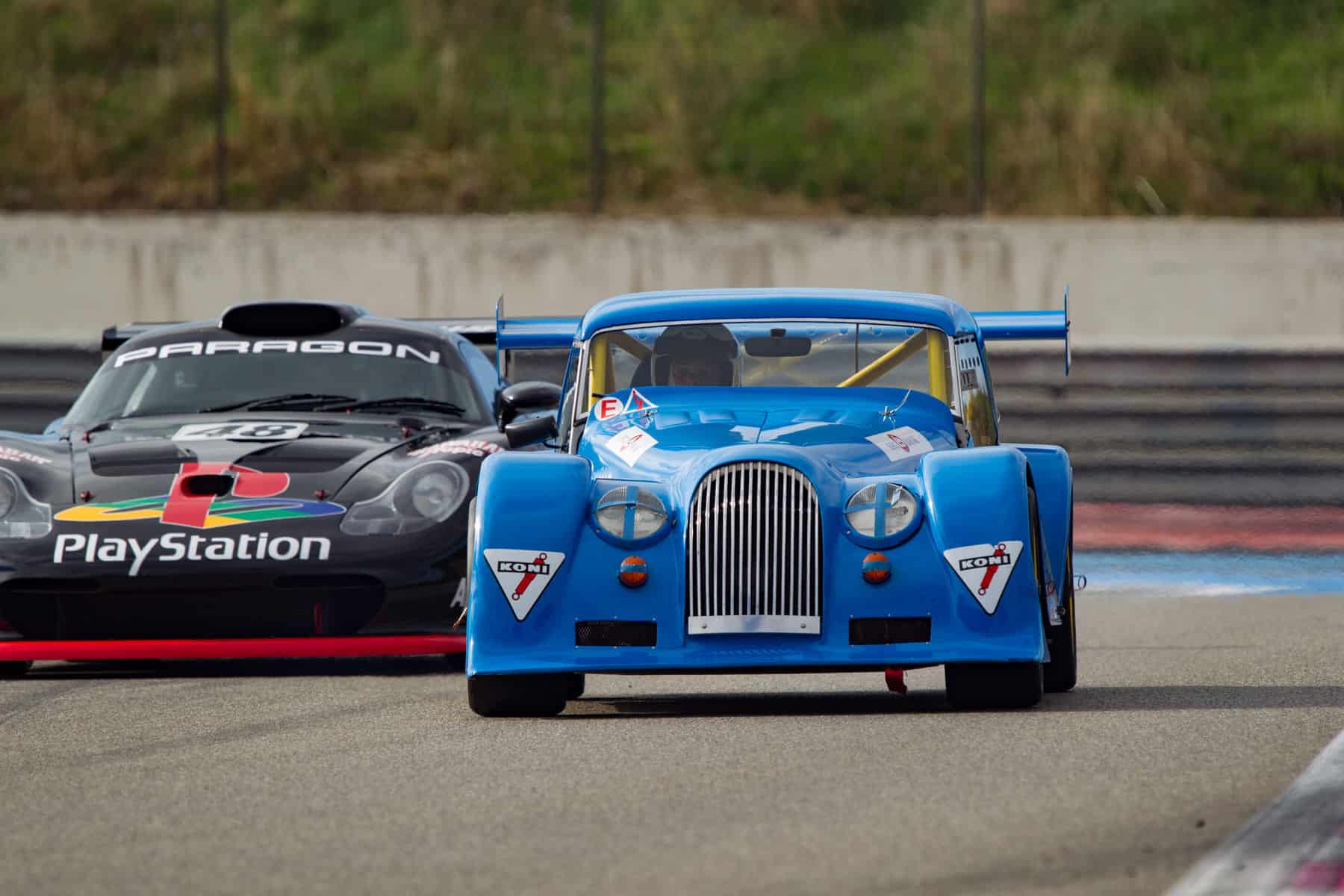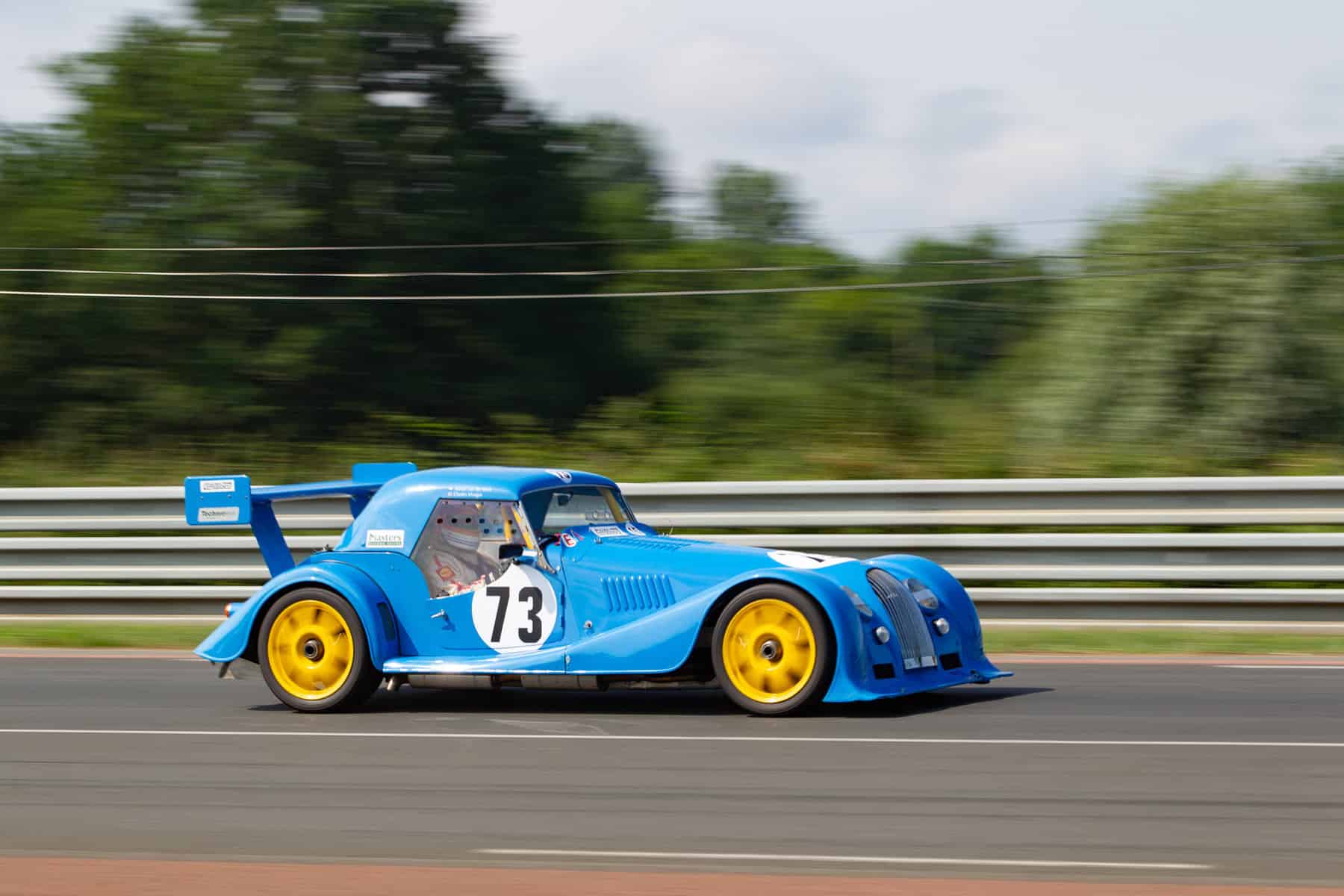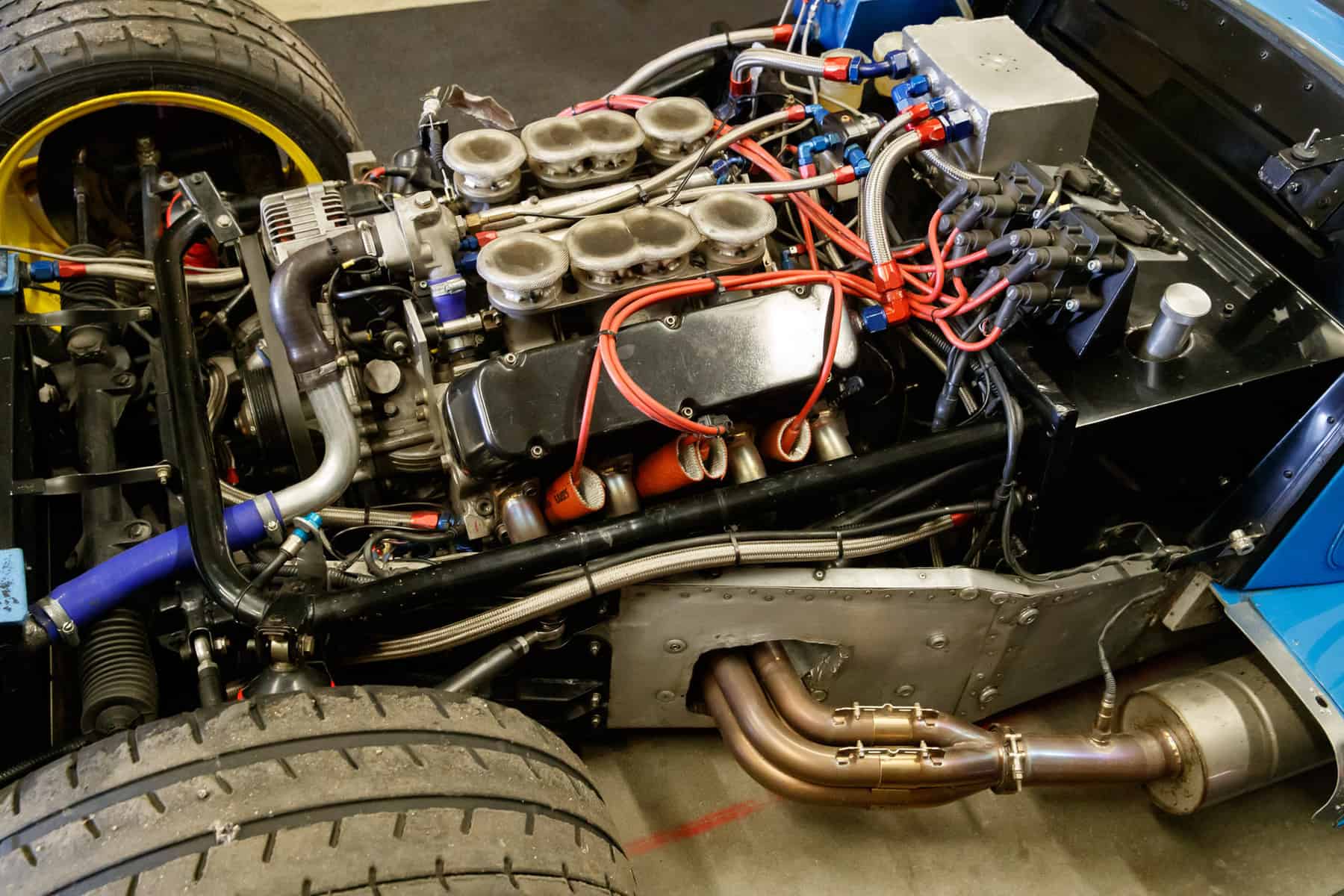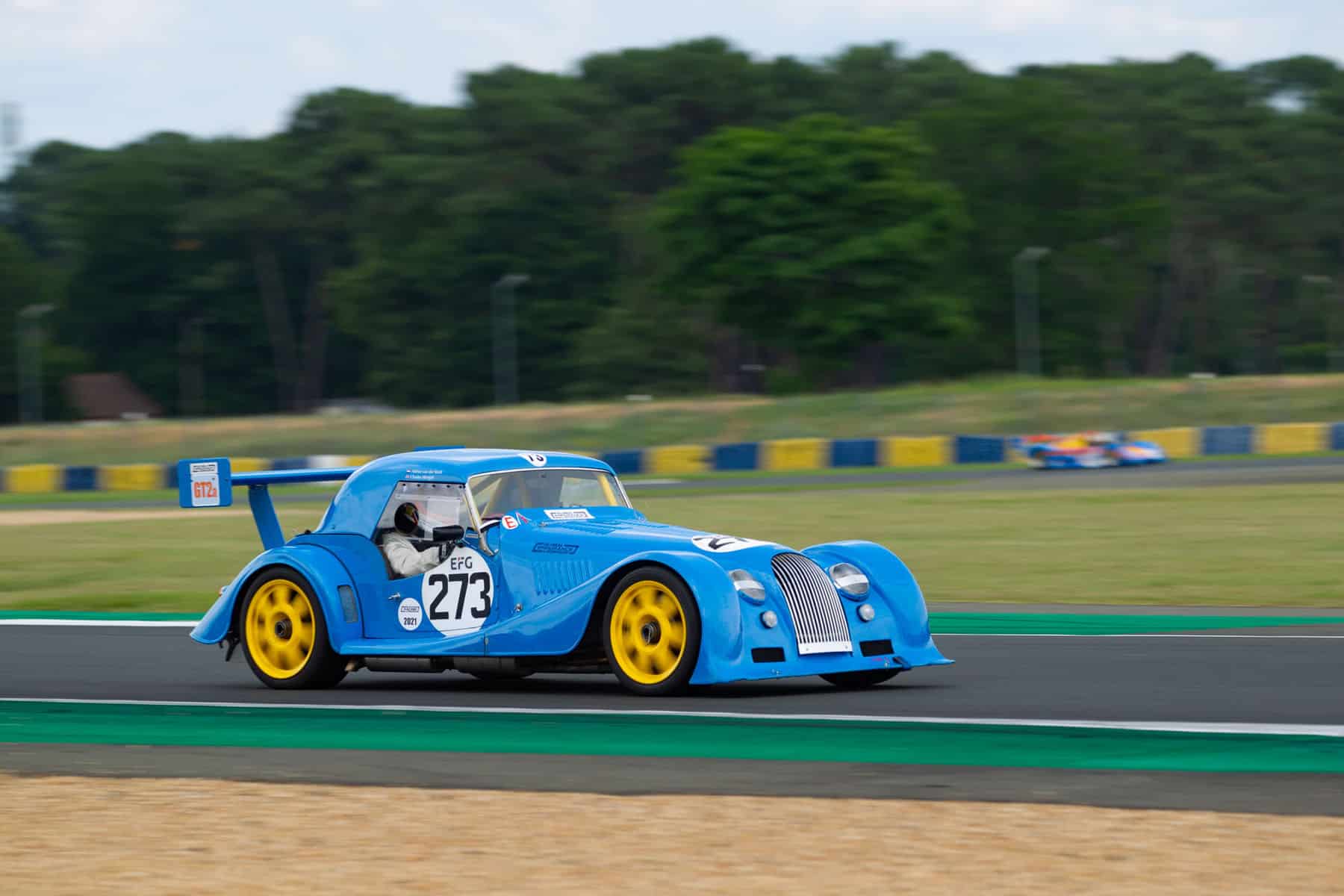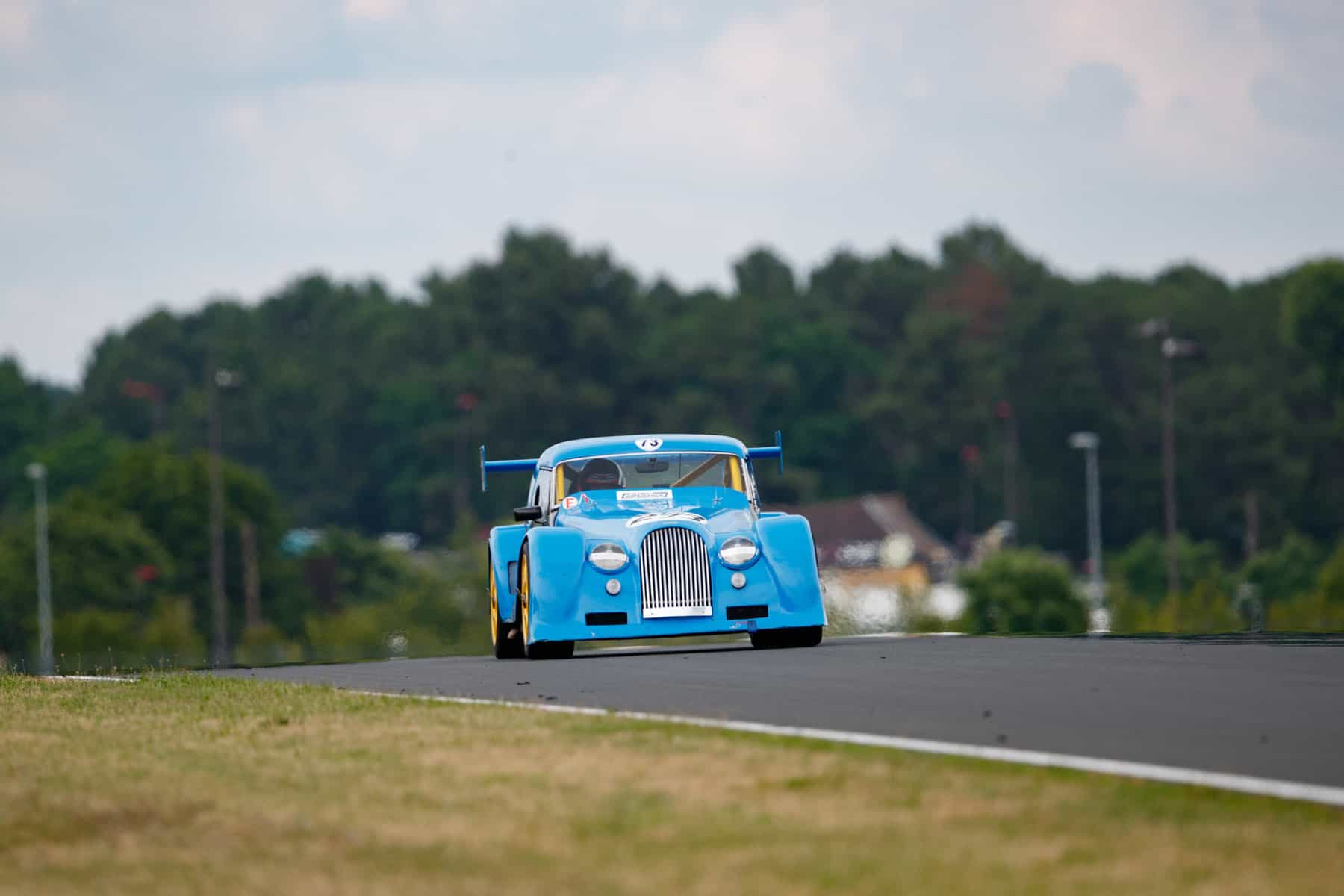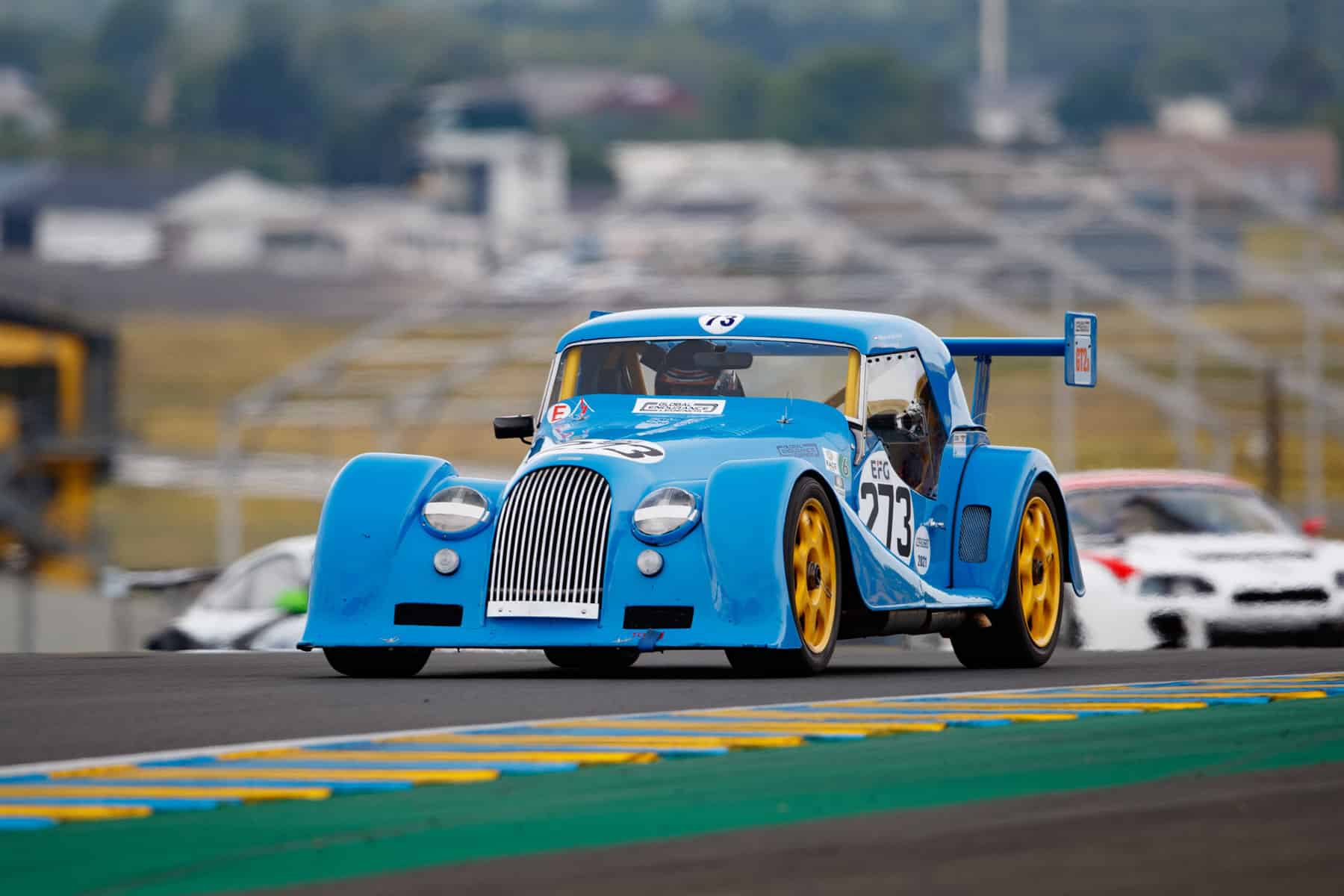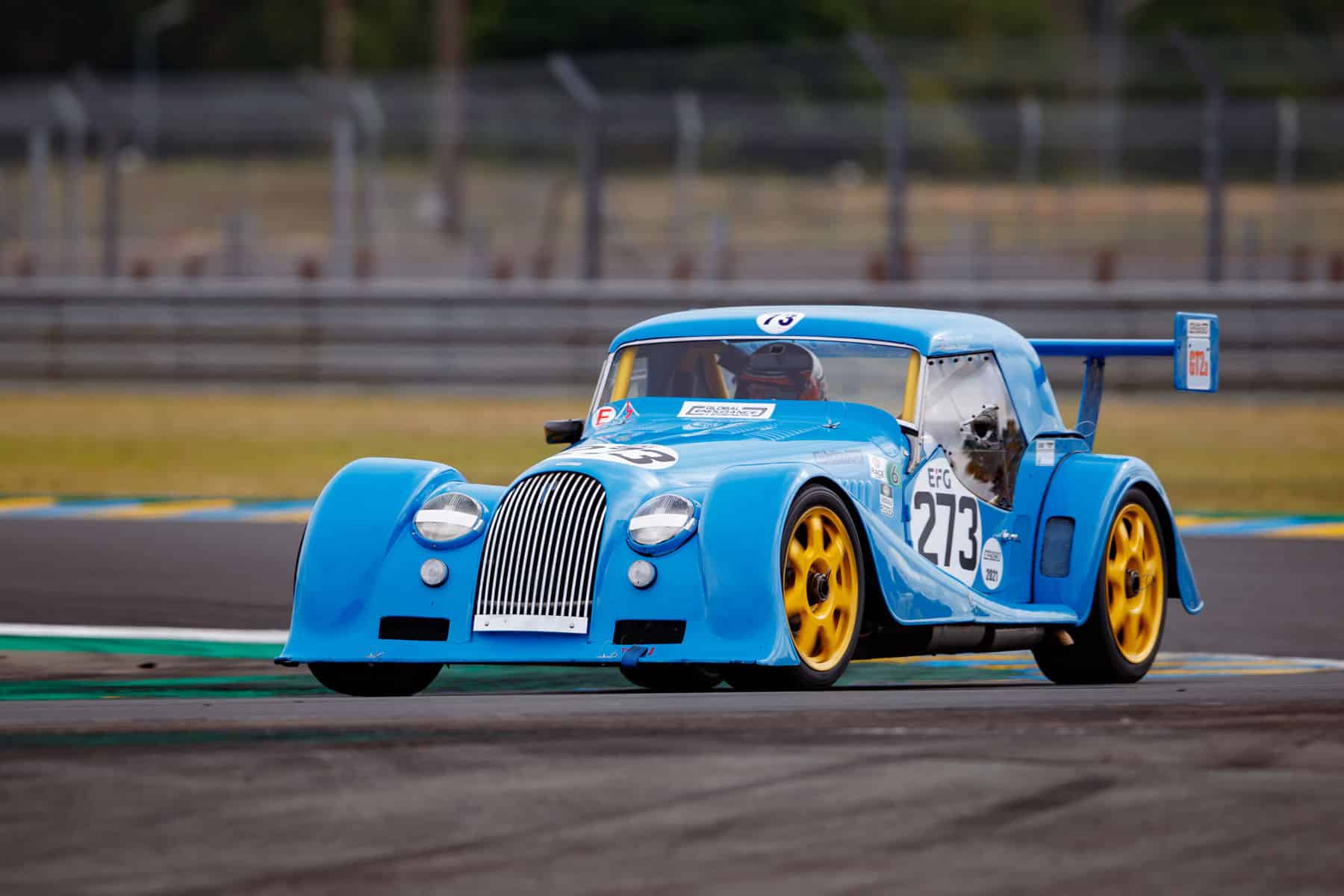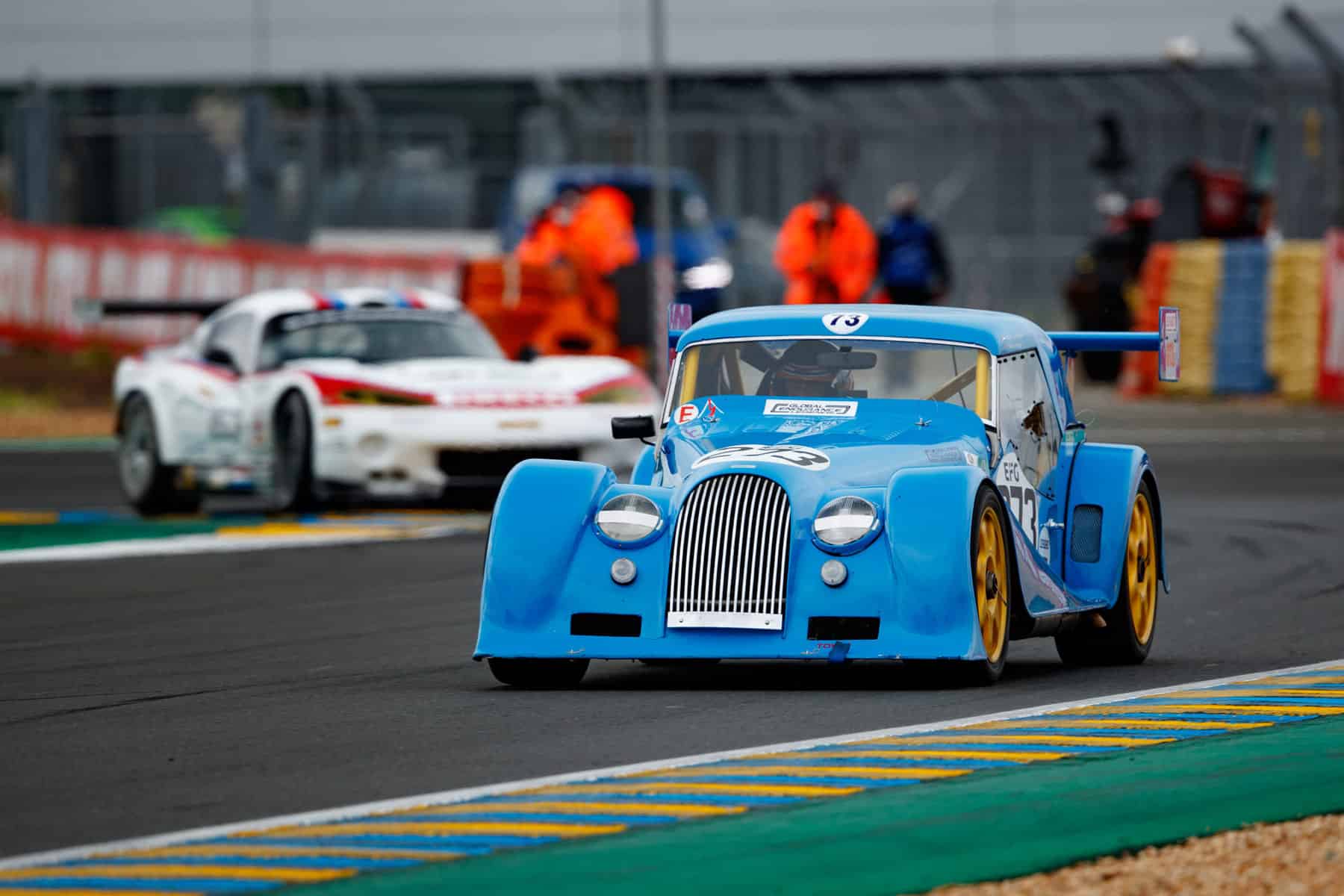Morgan Plus 8 GTR
Looks can be deceiving
BY: WOUTER MELISSEN
Fiercely independent and family-owned until very recently, the Morgan Motor Company must be one of the most underestimated of all sports car manufacturers.
A signature design, carried over for generations, as well as an oft-repeated myth that Morgans use wooden chassis may both contribute to the sense that a Morgan is not quite of this age. But, truth be told, no Morgan ever featured a wooden chassis; and in terms of design, looks, as is often the case, can be deceiving. The current generation Morgans are highly sophisticated and their origin story can be traced back to the mid-1990s with this unique Plus 8 GTR competition car.
At that time, the most potent Morgan being built at the factory in Malvern, England, was the Plus 8. This model was introduced in 1968 and effectively was a V8-engined version of the Plus 4 that had been in production since 1950 and which itself was derived from the Morgan 4/4. Launched in 1936, and only really phased out in 2019, the 4/4 was the British manufacturer’s first foray into the four-wheel market. From the company’s foundation in 1910, Morgan had only produced three-wheelers. For all intents and purposes, the 4/4, Plus 4, and Plus 8 were subtle variants of the same basic design. All used a ladder frame – built from steel – with a live rear axle and independent sliding pillar front suspension.
Over the years, modifications were made to keep the cars up to date, like the addition of disc brakes. The wood so famously associated with Morgan was ash and used as the lightweight subframe onto which the body panels were mounted. The design of the cars remained virtually unchanged, which is what really made and still makes Morgan unique. The gradual evolution of the models will have kept the overhead of the company down for many years. As time progressed, this business model made the development of a brand-new model both an ever more inevitable but also increasingly bigger step.
A first tentative step in that direction was taken in the early 1990s when the first all-new Morgan chassis in nearly sixty years was created. Gone was the steel ladder frame, which struggled to handle engines with more than 250 hp. In its place was a bespoke aluminum platform chassis that did match the dimensions of the existing Plus 8. Reinforced with a honeycomb core, the aluminum sheets were bonded and riveted together to form the main structure of the car. The material had originally been developed by Swiss industrial giant Ciba-Geigy and was also used for the bulkheads of the Boeing 747 airliner. The chassis was constructed with the help of Ciba-Geigy’s Professor George Woodley. It was found to be almost twice as stiff as the traditional ladder frame chassis during tests at the MIRA proving grounds, so it was more than capable of handling more powerful engines.
At the front of the chassis a separate steel tubular spaceframe was used to house the engine and reinforce the suspension mounting points. Here there was another major break with tradition as the sliding pillar suspension and leaf springs that had been famously used since the Morgan three-wheelers entered series production in 1911. Instead, the new car featured double wishbones with coil springs. At the rear, a live axle was used with twin trailing arms. A downside of the honeycomb aluminum chassis was that it derived its strength from its entire structure, which made adding conventional mounting points impossible. For the front suspension, for example, a separate steel plate, with the appropriate mounting points, was eventually bolted to the chassis to spread the load more evenly across the honeycomb aluminum structure.
That the new chassis matched the Plus 8’s dimensions was crucial, as secrecy was key in this project. Accordingly, aluminum Plus 8 bodywork was fitted on the chassis complete with the ash structure. In addition to the classic Morgan lines, the Rover V8 of the Plus 8 was also carried over to the new car. It was registered for the road as a Plus 8 and was handed to Charles Morgan, the grandson of company founder H.F.S. Morgan. The new “Plus 8” was then used extensively on the road throughout 1994 by Charles Morgan to assess the new chassis. He also ran the “Malvern Monster” at Shelsey Walsh and at several track events, where it proved quite a bit quicker than the regular production Plus 8.
The extensive tests also revealed problems with the new chassis. There were issues with corrosion where the steel mounting points met with the aluminum panels. The thickness of the aluminum honeycomb material itself was also a drawback, as it affected the interior space. After ten thousand miles of testing, the conclusion was that while the new Plus 8 was very quick, its sophisticated aluminum honeycomb chassis was not quite suitable for use in a production car yet. Charles Morgan was not quite ready with the car yet and to salvage the project, he commissioned the prototype to be rebuilt as a racing car to compete in the 1995 International BPR Championship.
Tasked with this work was legendary touring car preparer Andy Rouse Engineering. The first task at hand was to fit a proper competition drivetrain. The engine fitted was still based on the Rover V8 and was built by specialists Ian Richardson and Graham Nash. The displacement of the all-alloy engine was enlarged from 3.5 to 5.0 liters. The dry-sump V8 was fitted with the bespoke “Wildcat” heads that Richardson and Nash had already been developing for other customers. These featured larger intake and exhaust ports and valves and also relocated push-rods to allow for the increase in displacement. The engine destined for the Morgan was also the first Rover V8 to be fitted with a roller camshaft. The potent racing engine was mated to a close-ratio, six-speed gearbox, while a limited slip differential was also fitted.
Painted in “Morgan Racing Blue” and equipped with a matching hard-top and bright yellow wheels, the new Morgan competition car was impossible to miss. It was first raced during the first weekend of October in 1994. Entered as the Plus 8 GTR, it was driven by Charles Morgan to a tenth-place finish. At the start of the new year, the car was fully homologated and eligible to run as a GT2 car in the BPR championship and also opened the door to a potential Le Mans entry. Charles Morgan entered the car for the Donington round of the BPR in May but ultimately did not show. The car was raced at Silverstone with Bill Wykeham as co-driver but a suspension failure brought a premature end to this outing. A month later Morgan raced the car at Silverstone again, in the British GT race, but again did not make it to the finish.
Morgan subsequently called in the services of longtime associate Chris Lawrence, who had been responsible for the hugely successful Plus 4 Super Sports racing cars of the early 1960s. He was called in to help with a new Plus 8 racer that was in the works and designed with the help of Professor Jim Randle. Conventional laser cut aluminum panels were used and bonded with an adhesive. This construction method was similar to the one used for the Lotus Elise, which was launched in September of 1995. The first bonded chassis was ready before the end of the year but there was no time to construct a complete car before the start of the 1996 season. As a stop-gap, Lawrence helped to further update the honeycomb. It received revised bodywork with integrated headlights and a full-width front splitter. A rear wing was also added during the 1996 season.
The upgrades were carried through in time for the BPR Global GT Series season opening race at Le Castellet. Morgan once again shared the driving duties with Wykeham but the Plus 8 GTR struggled for pace. It qualified fiftieth of fifty-one entries and ultimately finished twenty-eighth overall. It was the start of a difficult season of racing that did see Morgan compete in all the European rounds of the BPR championship. In the subsequent eight outings, the Plus 8 GTR failed to qualify once, retired three times, and when it did reach the finish, eighteenth overall was the best it could muster on two occasions. After recording one of those eighteenth-place finishes, in the 4 Hours of Nogaro on October 6, the Plus 8 GTR was retired from active duty.
For the 1997 season, the bonded aluminum competition car took the original Plus 8 GTR’s place. It was a step forward but like its aluminum honeycomb predecessor, it was the aging Rover engine that held it back. The new car was briefly raced with a Chevrolet V8 before being retired as well. While not a success on the racing track, the two competition cars provided Morgan with a clear direction. Early in 1998, a new engine deal was done with BMW for a modern V8 engine to power the subsequent model. This was the Aero 8 launched in 2000, which combined the BMW V8 with the bonded chassis and a more aerodynamic version of the classic Morgan lines that was clearly inspired by the two racing cars. Morgan came full circle in 2012 when the Aero chassis was used for a new Plus 8 model.
In March of 1997, the original aluminum honeycomb Plus 8 GTR was sold to Dutch Morgan enthusiast Adrian van der Kroft complete with a spares package. He explained that the reason for adding the car to his vast stable was part of a bigger plan: “I had just won the GT class in the historic Le Mans 12 Hours with a Morgan. This sparked a desire to race in the 24 Hours of Le Mans with an all-new Morgan.” He continues: “The plan was to do so with the Aero that was under development. By acquiring the original Plus 8 GTR, I managed to add a works GT racer and the prototype to a new generation of Morgans to my stable but also to help finance the further development of the Aero.”
In the end, van der Kroft did not compete with the Aero 8 at Le Mans but thanks to his contributions, the car could be fully developed and was also raced at Le Mans. He has regularly raced the car in Morgan club events and more recently in the newly established historic racing series for cars of the 1990s and 2000s like the Endurance Racing Legends. This allowed van der Kroft to race this car at Le Mans, first as part of the Peter Auto meeting in July of 2021 and then a month later as a support event for the 24 Hours of Le Mans. “Despite the modern chassis, the Plus 8 GTR was still old fashioned in many ways.” Van der Kroft explains: “It is not particularly aerodynamic, and I am not sure the rear wing actually works. The heat in the cockpit is at times unbearable but being surrounded by leather and walnut also provides a safe and warm ‘Gentlemen’s Club’ environment familiar to all Morgan drivers.”
At first glance, the Plus 8 GTR could be considered a wholly unsuccessful chapter in Morgan’s racing history. A closer look reveals that it started a revolution at Malvern that finally concluded in 2019 when the last Morgan with a steel platform chassis rolled off the line. Throughout the range, Morgan now uses a new bonded aluminum chassis, known as the CX platform, which replaced the Aero chassis. Having cherished and enjoyed the honeycomb aluminum Plus 8 GTR for nearly twenty-five years, van der Kroft has decided to part with the ex-works Morgan. It is currently for sale with Belgian dealer RMD.

